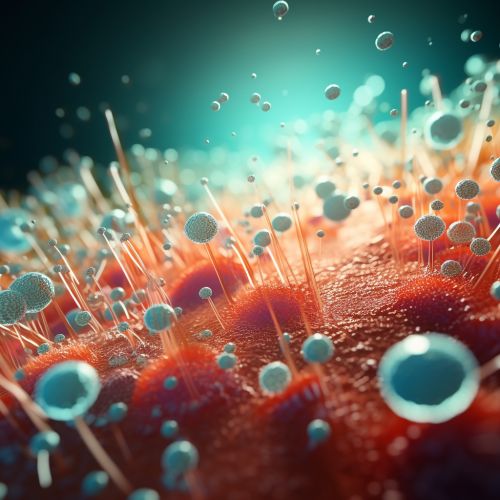Mechanisms of Chemotaxis in Bacterial Pathogens
Introduction
Chemotaxis refers to the movement of an organism in response to a chemical stimulus. Bacterial pathogens, in particular, have developed sophisticated mechanisms of chemotaxis to survive, proliferate, and cause disease in their hosts. This article delves into the mechanisms of chemotaxis in bacterial pathogens, providing a comprehensive and detailed exploration of this complex biological process.


Mechanisms of Chemotaxis
Bacterial chemotaxis is a process that involves a series of molecular interactions, signal transduction pathways, and cellular responses. The primary components of this process include chemoreceptors, a two-component system, and the flagellar motor.
Chemoreceptors
Chemoreceptors, also known as Methyl-accepting chemotaxis proteins (MCPs), are the primary sensory proteins in bacterial chemotaxis. These proteins detect chemical signals in the environment and initiate the chemotactic response. MCPs are typically located in the cell membrane and have a periplasmic domain for ligand binding, a transmembrane domain, and a cytoplasmic domain for signal transduction.
Two-Component System
The two-component system is a basic signal transduction system in bacteria that consists of a sensor histidine kinase and a response regulator. In the context of chemotaxis, the sensor histidine kinase is CheA, and the response regulator is CheY. Upon detection of a chemical signal by MCPs, CheA is autophosphorylated and then transfers the phosphate group to CheY. Phosphorylated CheY (CheY-P) interacts with the flagellar motor to induce changes in the direction of flagellar rotation.
Flagellar Motor
The flagellar motor is the molecular engine that propels the bacterium towards or away from a chemical stimulus. The direction of flagellar rotation determines the type of movement: counterclockwise rotation results in a smooth swimming motion (run), while clockwise rotation causes a change in direction (tumble). The switch between run and tumble is controlled by the phosphorylation state of CheY.
Chemotaxis in Bacterial Pathogens
Bacterial pathogens use chemotaxis to navigate towards host tissues, evade immune responses, and establish infections. The following sections discuss the role of chemotaxis in several well-studied bacterial pathogens.
Escherichia coli
E. coli is a model organism for studying bacterial chemotaxis. This bacterium uses chemotaxis to move towards nutrients and away from harmful substances. The chemotactic system of E. coli is one of the best-characterized systems and has provided valuable insights into the molecular mechanisms of bacterial chemotaxis.
Helicobacter pylori
H. pylori, the bacterium responsible for gastric ulcers and stomach cancer, uses chemotaxis to navigate through the stomach mucus layer and colonize the gastric epithelium. The chemotactic response of H. pylori is essential for its pathogenicity.
Pseudomonas aeruginosa
P. aeruginosa is a major cause of hospital-acquired infections, particularly in immunocompromised patients. This bacterium uses chemotaxis to move towards host tissues and establish infections. P. aeruginosa chemotaxis is also involved in biofilm formation, a key factor in its resistance to antibiotics.
Conclusion
Understanding the mechanisms of chemotaxis in bacterial pathogens is crucial for the development of new therapeutic strategies. By targeting the chemotactic machinery, it may be possible to prevent bacterial movement and colonization, thereby inhibiting infection.
